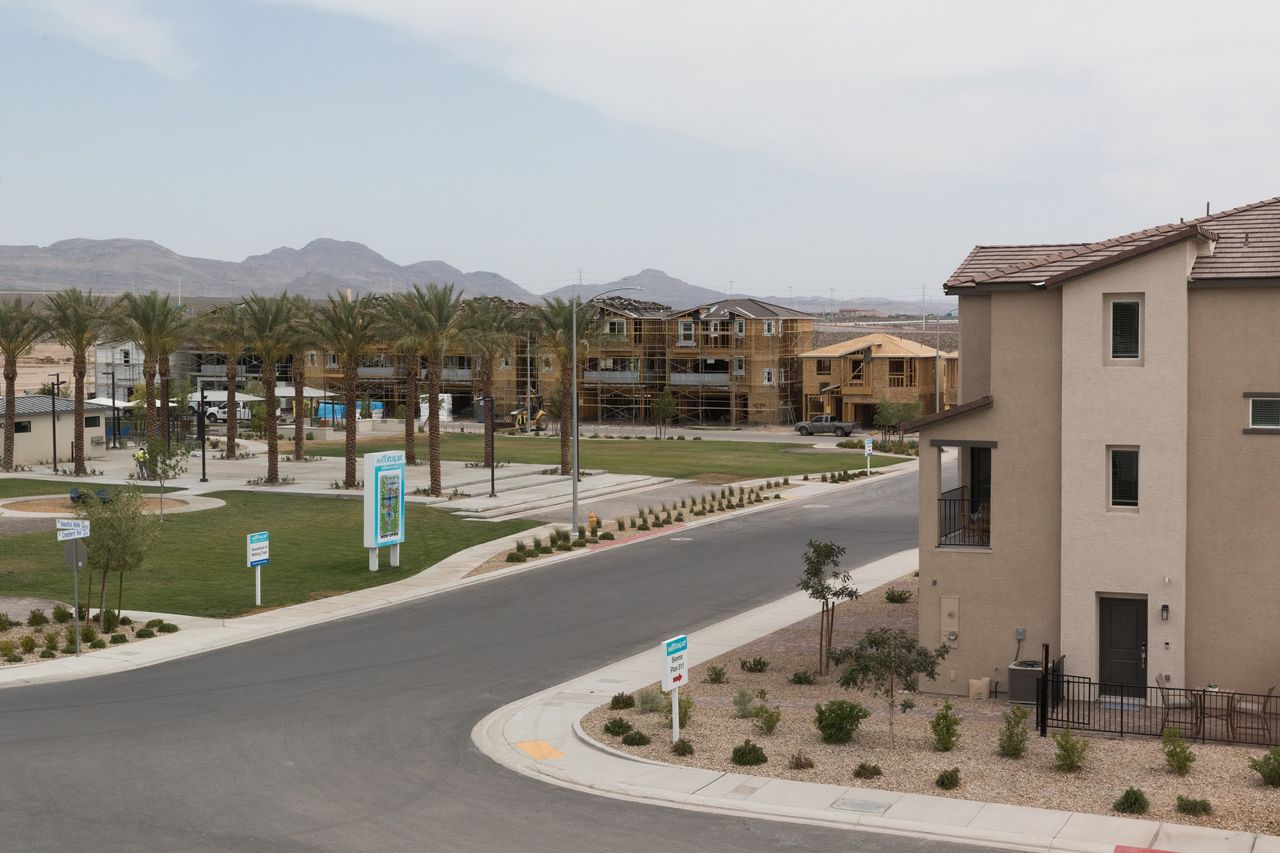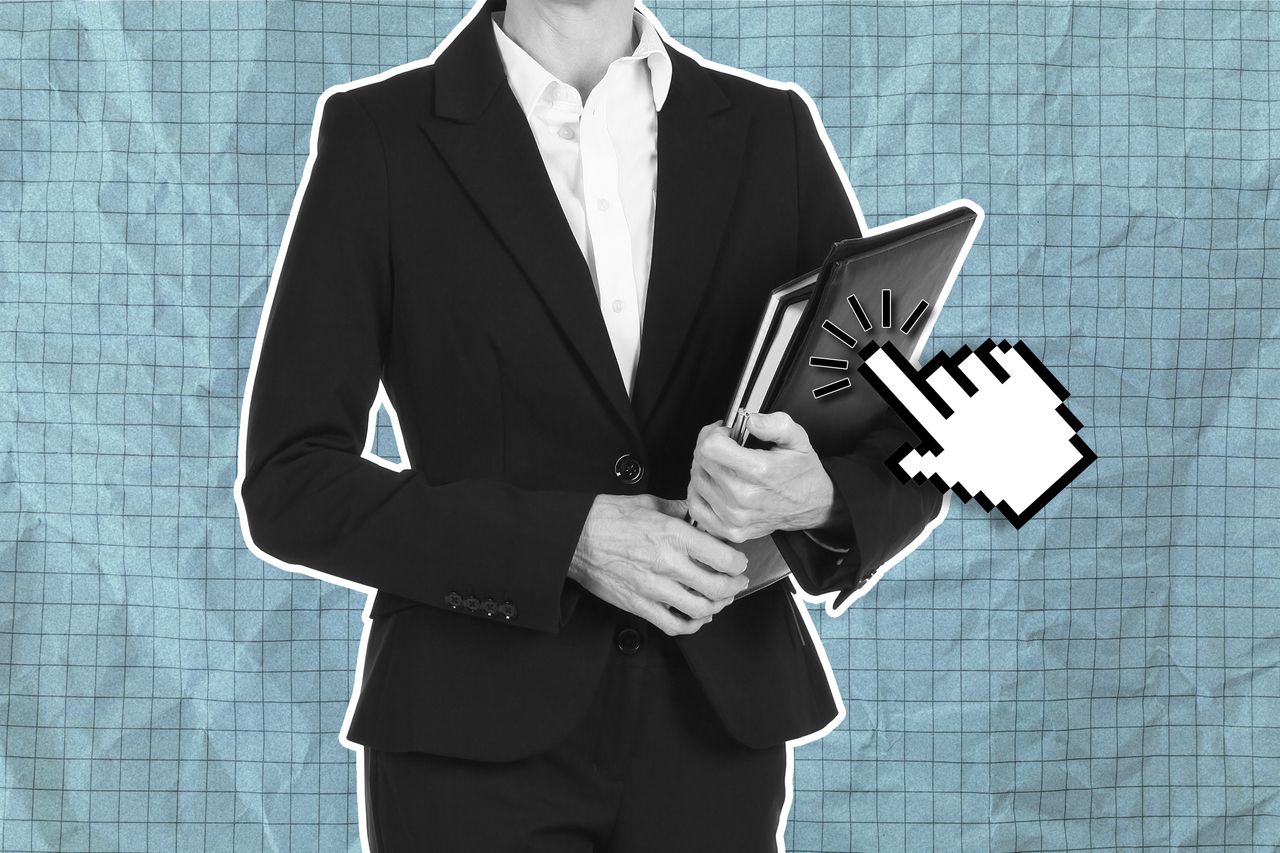Builders Say They’re Ready for This Housing Slowdown. ‘I’ve Learned My Lesson.’
Meltdown of 2007-09 fostered less risky tactics; not as much debt
NORTH LAS VEGAS, Nev.—A year ago, business was booming for Touchstone Living Inc. The Nevada builder had a list of 639 qualified buyers who wanted homes in its development about 15 miles north of the Las Vegas Strip.
Today, that list has shrivelled to about 30. Many would-be buyers are unable to qualify for loans since mortgage rates have surged to 6.94%, their highest level since 2002 and more than double the rate of a year ago.
Little of this is good news for Touchstone or its owner, Tom McCormick. That said, in a potential indicator for how this slowdown could play out, it isn’t looking like the last time the Las Vegas market melted down.
Mr. McCormick said his new company has less debt and fewer lenders than his former company did heading into the 2007-09 recession, and has grown more slowly and bought less land.
“I’ve learned my lesson,” he said. Still, he said, “I’ve never seen it change this fast,” referring to the rapid decline in sales.
After a pandemic-fuelled buying spree that unleashed the most powerful U.S. housing boom in 15 years, demand has plummeted as mortgage rates have risen. Finished homes are sitting on the market, hundreds of thousands of new ones are expected to be completed in the coming months, and many builders are cutting prices. Existing-home prices are declining from their springtime peaks, and single-family home construction in September fell 18% from a year earlier.
During the earlier housing downturn, which was triggered in part by the collapse of the subprime-mortgage market, about half of all home builders disappeared. Home builders that lived through that said they learned some hard lessons, and that the current slowdown won’t lead to another industry implosion. Also, mortgage lenders have tightened underwriting standards in recent years, reducing the risk of a wave of foreclosures.
Mr. McCormick’s former home-building company stopped construction in 2009 after losing projects to foreclosure. Home builders have been more conservative in recent years about taking on debt and owning a lot of land, industry analysts said. Some home builders have increased their use of land banks or other third-party arrangements that give them the option to buy land only when they need it.
Some home builders who have completed single-family homes but not yet sold them have turned to the rental market to bring in revenue, and others are selling them in bulk to investors at discounted prices to use as rentals.
This year’s rising mortgage rates, said Mr. McCormick, slashed the number of would-be buyers for his homes. “They still had the good credit, they still had the good job,” he said. But rising home prices and rates, he said, “just squeezed them out of the market.”
Other prospective buyers have backed away from buying anything now because of economic uncertainty, real-estate agents said. Consumer sentiment toward the housing market fell in September to the lowest level since 2011, according to Fannie Mae.
“How rapidly things have deteriorated is pretty remarkable,” said Ivy Zelman, chief executive of real-estate research and advisory firm Zelman & Associates, a unit of Walker & Dunlop Inc. But “there’s a huge difference from the go-go days of exotic mortgage products and no money down,” she said, referring to the loose lending environment before the 2007 crisis.
During the first two years of the Covid-19 pandemic, home builders couldn’t build homes fast enough to meet demand. Supply-chain issues and labor shortages slowed the pace of construction. Builders limited sales so they didn’t sell more homes than they could build, and selected buyers off wait lists or through lotteries. Prices soared, and builders ramped up construction as much as they could.
Now that new-home sales have slowed, the risk of a glut is rising. About 800,000 single-family homes were under construction in September, on a seasonally adjusted basis, up 11% from a year earlier and 52% from September 2019, according to the Census Bureau. Many of those homes were started before the market slowed.
Some are already sold, but not all. In an effort to lure reluctant buyers or keep others from cancelling, builders are paying upfront fees to mortgage lenders to reduce buyers’ mortgage rates and offering other incentives, such as long-term rate locks. Builders also are canceling deals to acquire land.
There was an 8.1-month supply of new homes on the market at the end of August, according to the Census Bureau.
“They are sitting on a lot of inventory that’s under construction, and that’s the stuff that they’d like to move,” said Carl Reichardt, a home-building analyst at financial-services firm BTIG. “I think it’s going to get worse before it gets better.”
Lennar Corp., the nation’s second-biggest builder by volume, said in a September earnings call that new sales orders fell 12% in the third quarter from a year earlier. Its average sales price for new orders rose 1% from a year earlier, but fell 9% from the second quarter.
“It’s clear that there’s going to be more increase in interest rates that we’re going to be dealing with,” said Stuart Miller, Lennar’s executive chairman, on the call. Builders will need to cut prices and offer incentives, he said, or sales would decline.
Rising rates have hit the existing-home market, too. Between January and September, sales activity declined 27% on a seasonally adjusted annualised basis, a faster decline than during the subprime crisis.
Even so, existing-home prices are up from a year ago on a national basis. The number of existing homes for sale remains well below historical levels, and millions of millennials are moving into their prime home-buying years—both factors that could limit price declines, economists said.
New-home construction, which accounts for about 10% of overall home sales, faces a bigger risk of slowing sales and price declines in the near term because new homes typically are more expensive than existing homes, and because the supply is continuing to grow.
For Mr. McCormick, the summer’s slowdown was a scary reminder of how easily the market can turn.
He was the owner of Astoria Homes, one of the biggest privately owned home builders based in Nevada during the early 2000s housing boom. At its peak in 2004 and 2005, Astoria built about 1,000 homes a year.
“It was so good for so long,” Mr. McCormick said. “I just became overconfident.”
When the subprime-mortgage crisis erupted in 2007, the housing market collapsed and many builders went out of business. Las Vegas became one of the faces of the national foreclosure crisis. Home builders, who had built a surplus of homes during the boom, couldn’t compete with existing homes that were selling for far less than new ones.
Astoria shrank from 170 employees to three, including Mr. McCormick. A few of its lenders were taken over by the Federal Deposit Insurance Corp. Mr. McCormick, who had made personal guarantees on Astoria’s debts, spent years settling them.
Some home builders were so shell-shocked by the crisis that they were hesitant to increase their building for years.
“The great financial crisis, even though that was 15, 16 years ago, still feels very current and very raw to the builders in Las Vegas, because they took it on the chin as much as anybody in the country,” said Ken Perlman, managing principal at Irvine, Calif.-based John Burns Real Estate Consulting.
As a result, the supply of new homes isn’t as excessive as it was before the housing crisis.
Nationwide, the number of residential builders declined by 50% between 2007 and 2012, according to the National Association of Home Builders. Single-family housing starts, a measure of new-home construction, fell from 1.7 million in 2005 to 445,000 in 2009, according to the Census Bureau. Builders didn’t exceed one million single-family starts in a year again until 2021.
By 2012, Mr. McCormick was ready to dip his toes back in. He expected Las Vegas’s population to keep growing and home prices to rebound. He started buying land that year, and Touchstone sold its first home in 2014. It is the largest Nevada-based privately owned builder, and it had about 4.8% market share in the Las Vegas area last year, according to Builder Magazine.
The S&P Homebuilders Select Industry stock index is down 36% this year, outpacing the S&P 500’s 21% decline. A measure of U.S. home-builder confidence fell for the 10th straight month in October to the lowest level since May 2020, according to the NAHB. About one-quarter of builders surveyed by the association in September said they had reduced prices in the prior month.
In the Las Vegas area, new-home sales have slid from more than 1,000 a month in the first quarter to 488 in August, said Andrew Smith, president of Las Vegas-based Home Builders Research Inc.
Most Las Vegas-area builders surveyed in September had reduced prices that month from their August levels, once incentives such as interest-rate buy downs were factored in, Mr. Perlman said.
Mr. McCormick is hoping Touchstone’s prices give his company an advantage in a slow market. Touchstone’s homes sell for between about $315,000 and $433,000. The region’s median new-home closing price in August was about $492,000, according to Home Builders Research.
In September, Touchstone decided to start renting out some of its properties because it expects home-buying demand to stay low.
“People still want to own homes, but they simply can’t afford it,” Mr. McCormick said. “So the business plan has to change.”
 Copyright 2020, Dow Jones & Company, Inc. All Rights Reserved Worldwide. LEARN MORE
Copyright 2020, Dow Jones & Company, Inc. All Rights Reserved Worldwide. LEARN MORE
This stylish family home combines a classic palette and finishes with a flexible floorplan
Just 55 minutes from Sydney, make this your creative getaway located in the majestic Hawkesbury region.
As Paris makes its final preparations for the Olympic games, its residents are busy with their own—packing their suitcases, confirming their reservations, and getting out of town.
Worried about the hordes of crowds and overall chaos the Olympics could bring, Parisians are fleeing the city in droves and inundating resort cities around the country. Hotels and holiday rentals in some of France’s most popular vacation destinations—from the French Riviera in the south to the beaches of Normandy in the north—say they are expecting massive crowds this year in advance of the Olympics. The games will run from July 26-Aug. 1.
“It’s already a major holiday season for us, and beyond that, we have the Olympics,” says Stéphane Personeni, general manager of the Lily of the Valley hotel in Saint Tropez. “People began booking early this year.”
Personeni’s hotel typically has no issues filling its rooms each summer—by May of each year, the luxury hotel typically finds itself completely booked out for the months of July and August. But this year, the 53-room hotel began filling up for summer reservations in February.
“We told our regular guests that everything—hotels, apartments, villas—are going to be hard to find this summer,” Personeni says. His neighbours around Saint Tropez say they’re similarly booked up.
As of March, the online marketplace Gens de Confiance (“Trusted People”), saw a 50% increase in reservations from Parisians seeking vacation rentals outside the capital during the Olympics.
Already, August is a popular vacation time for the French. With a minimum of five weeks of vacation mandated by law, many decide to take the entire month off, renting out villas in beachside destinations for longer periods.
But beyond the typical August travel, the Olympics are having a real impact, says Bertille Marchal, a spokesperson for Gens de Confiance.
“We’ve seen nearly three times more reservations for the dates of the Olympics than the following two weeks,” Marchal says. “The increase is definitely linked to the Olympic Games.”

Getty Images
According to the site, the most sought-out vacation destinations are Morbihan and Loire-Atlantique, a seaside region in the northwest; le Var, a coastal area within the southeast of France along the Côte d’Azur; and the island of Corsica in the Mediterranean.
Meanwhile, the Olympics haven’t necessarily been a boon to foreign tourism in the country. Many tourists who might have otherwise come to France are avoiding it this year in favour of other European capitals. In Paris, demand for stays at high-end hotels has collapsed, with bookings down 50% in July compared to last year, according to UMIH Prestige, which represents hotels charging at least €800 ($865) a night for rooms.
Earlier this year, high-end restaurants and concierges said the Olympics might even be an opportunity to score a hard-get-seat at the city’s fine dining.
In the Occitanie region in southwest France, the overall number of reservations this summer hasn’t changed much from last year, says Vincent Gare, president of the regional tourism committee there.
“But looking further at the numbers, we do see an increase in the clientele coming from the Paris region,” Gare told Le Figaro, noting that the increase in reservations has fallen directly on the dates of the Olympic games.
Michel Barré, a retiree living in Paris’s Le Marais neighbourhood, is one of those opting for the beach rather than the opening ceremony. In January, he booked a stay in Normandy for two weeks.
“Even though it’s a major European capital, Paris is still a small city—it’s a massive effort to host all of these events,” Barré says. “The Olympics are going to be a mess.”
More than anything, he just wants some calm after an event-filled summer in Paris, which just before the Olympics experienced the drama of a snap election called by Macron.
“It’s been a hectic summer here,” he says.

AFP via Getty Images
Parisians—Barré included—feel that the city, by over-catering to its tourists, is driving out many residents.
Parts of the Seine—usually one of the most popular summertime hangout spots —have been closed off for weeks as the city installs bleachers and Olympics signage. In certain neighbourhoods, residents will need to scan a QR code with police to access their own apartments. And from the Olympics to Sept. 8, Paris is nearly doubling the price of transit tickets from €2.15 to €4 per ride.
The city’s clear willingness to capitalise on its tourists has motivated some residents to do the same. In March, the number of active Airbnb listings in Paris reached an all-time high as hosts rushed to list their apartments. Listings grew 40% from the same time last year, according to the company.
With their regular clients taking off, Parisian restaurants and merchants are complaining that business is down.
“Are there any Parisians left in Paris?” Alaine Fontaine, president of the restaurant industry association, told the radio station Franceinfo on Sunday. “For the last three weeks, there haven’t been any here.”
Still, for all the talk of those leaving, there are plenty who have decided to stick around.
Jay Swanson, an American expat and YouTuber, can’t imagine leaving during the Olympics—he secured his tickets to see ping pong and volleyball last year. He’s also less concerned about the crowds and road closures than others, having just put together a series of videos explaining how to navigate Paris during the games.
“It’s been 100 years since the Games came to Paris; when else will we get a chance to host the world like this?” Swanson says. “So many Parisians are leaving and tourism is down, so not only will it be quiet but the only people left will be here for a party.”
This stylish family home combines a classic palette and finishes with a flexible floorplan
Just 55 minutes from Sydney, make this your creative getaway located in the majestic Hawkesbury region.






















